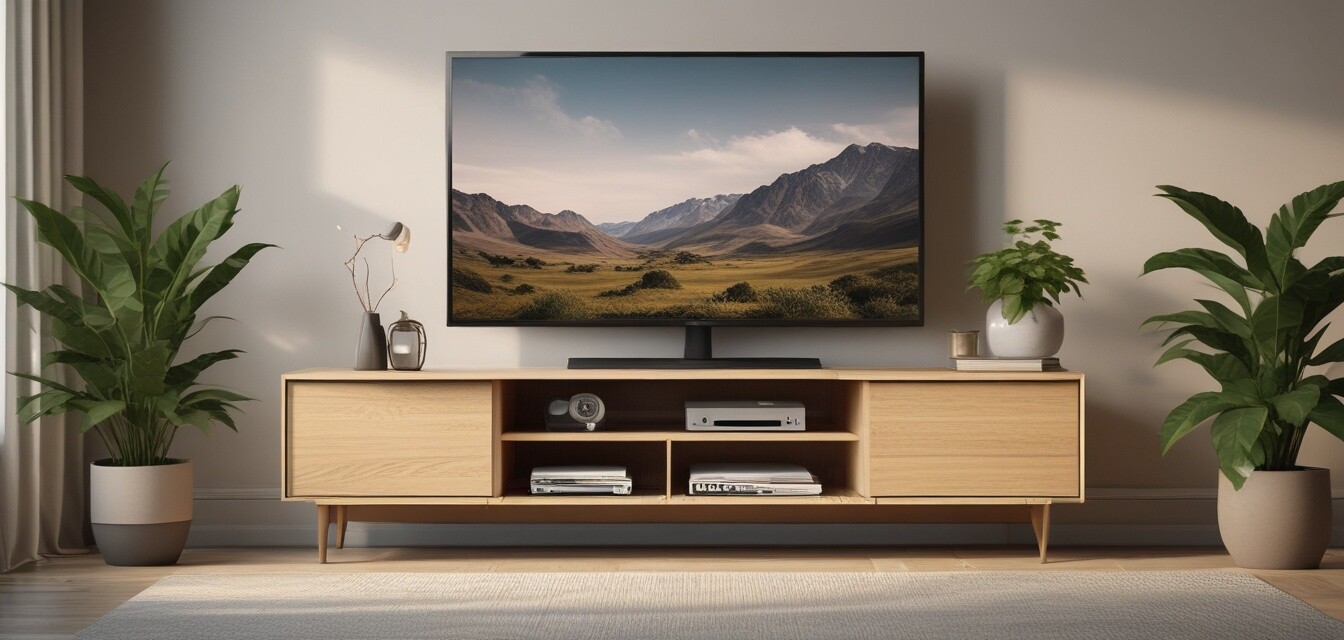
Eco-Friendly TV Stands: What to Watch For
Key Takeaways
- Understanding sustainable materials is crucial when selecting an eco-friendly TV stand.
- Company ethics play a key role in making environmentally responsible purchases.
- Consider the style and functionality of the stand to enhance your home cinema.
- Researching warranties can indicate product quality and company commitment to sustainability.
- Look for certifications that verify eco-friendly practices.
In today’s world, making environmentally conscious choices is more important than ever, especially when it comes to furniture. Eco-friendly TV stands not only provide functionality but also align with our values of sustainability and ethical consumption. In this guide, we will explore the essential factors to consider when selecting an eco-friendly TV stand, including material sourcing, company ethics, style, and certifications.
1. Material sourcing
The materials used in constructing a TV stand significantly impact its sustainability. Here are some common materials you should consider:
| Material | Description | Environmental Impact |
|---|---|---|
| Reclaimed wood | Wood that has been salvaged from old buildings or furniture. | Minimizes deforestation and waste. |
| Bamboo | A fast-growing grass that is very durable. | Highly renewable and grows without pesticides. |
| Metal | Aluminum or recycled steel is often used for modern designs. | High durability and can be recycled. |
| Composite materials | Made from reclaimed wood fibers and chemicals. | Can vary; check for VOC emissions. |
2. Company ethics
Understanding the values of the company from which you’re purchasing your eco-friendly TV stand is essential. Look for:
- Corporate social responsibility: Companies that actively engage in sustainable practices tend to prioritize ethical sourcing of their materials.
- Transparency: Ensure the company openly shares information about its production processes and material sourcing.
- Fair labor practices: Supporting companies that provide fair wages and safe conditions for their workers is vital.
3. Style and functionality
When choosing an eco-friendly TV stand, aesthetic appeal and functionality should also be considered. Consider the following styles:
- Corner TV stands - Perfect for saving space in smaller rooms.
- Entertainment consoles - Offer ample storage and a central location for your media setup.
- Floating TV stands - Create a sleek, modern look and save floor space.
4. Warranties and quality assurances
Look for brands that offer warranties on their products. A good warranty can indicate the company’s confidence in the quality of their TV stands. A warranty also provides you with peace of mind, knowing you’re protected in case of defects. Make sure to read the terms carefully to understand what is covered.
5. Certifications and eco-labels
Choosing products that bear recognized eco-labels can help ensure that you are making an environmentally beneficial choice. Look for these certifications:
| Certification | Description |
|---|---|
| Forest Stewardship Council (FSC) | Indicates that the wood is sourced from responsibly managed forests. |
| GREENGUARD Gold | Certifies that a product has low chemical emissions. |
| Global Organic Textile Standard (GOTS) | For organic textiles used in furniture upholstery. |
| Energy Star | Indicates energy-efficient manufacturing processes. |
Conclusion
Making an informed decision when choosing an eco-friendly TV stand is crucial for aligning your purchase with your values. By focusing on material sourcing, company ethics, aesthetics, warranties, and certifications, you can ensure that you are investing in a product that benefits both your home cinema and the environment. For more insights, tips, and options, feel free to visit our other guides in the Buying Guides section.
Pros
- Supports sustainable practices.
- Can enhance your home decor.
- Often made with durable materials.
- Contributes to reducing environmental impact.
Cons
- May require more research to ensure quality.
- Possibly higher initial cost than conventional furniture.
- Availability may vary by brand.